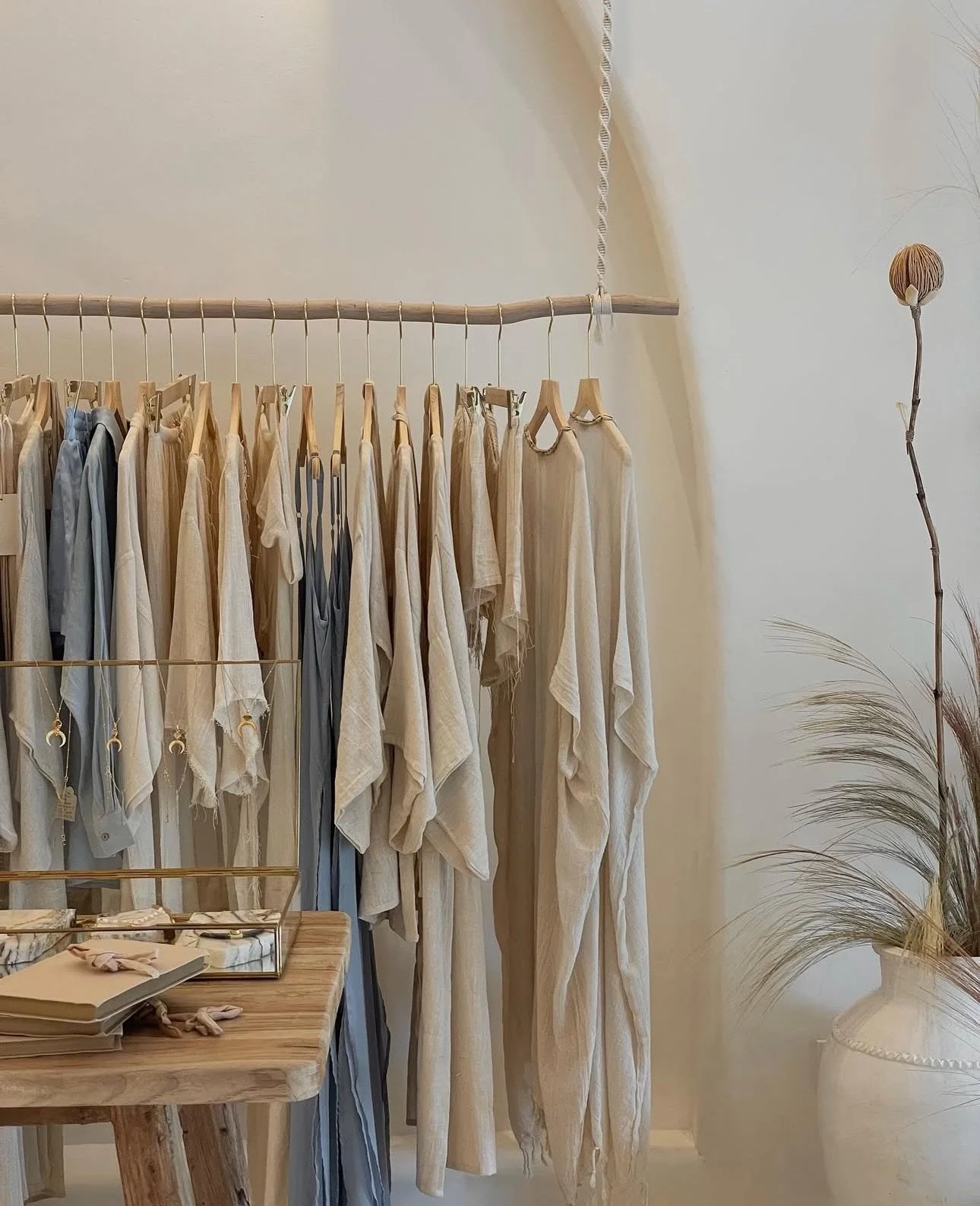Slow Fashion: The Movement Unravelling Fast Fashion’s Seams
by azulomo | 5 min read
Slow Fashion
A New Kind of Style Statement
In an era where wardrobes are refreshed faster than we can say “seasonal sale,” slow fashion emerges as a thoughtful alternative, weaving meaning back into our clothing choices. It's not about rejecting style but about embracing it with intention. Slow fashion emphasizes sustainability, ethics, and a deeper connection to the garments we wear.
This movement responds to the relentless churn of fast fashion, where clothing is mass-produced, often under questionable conditions, and discarded after minimal use. Slow fashion invites us to consider the journey of our clothes—from the raw materials to the hands that craft them—and to value quality over quantity.
But slow fashion isn’t just a shift in shopping habits—it’s a cultural reset. It asks us to step off the conveyor belt of trend-chasing and constant newness, and instead fall back in love with what we already own. It’s about that linen shirt that still makes you feel good five summers in, the hand-stitched jumper passed down with stories in its seams, or the dress you mend because you actually care. In a world wired for speed, slow fashion lets us reclaim time, meaning, and personal style—one mindful garment at a time.
Slow fashion isn’t about wearing less—it’s about wearing what matters more.
The Origin Story: Stitching Back the Soul of Style
The term slow fashion was introduced in the early 2000s by design activist Kate Fletcher, drawing inspiration from the slow food movement. It advocates for a more thoughtful, less exploitative approach to clothing production and consumption.
The movement gained significant traction after the 2013 Rana Plaza factory collapse in Bangladesh, which tragically claimed over 1,100 lives. This disaster highlighted the dire consequences of the fast fashion industry's practices, prompting a global call for change.
So, What Exactly Is Slow Fashion?
Slow fashion is a philosophy that champions a circular, conscious, and considerate approach to clothing. It encourages us to ask:
Where was this made?
Who made it?
What is it made from?
Will I still love it in five years?
It's about choosing well-crafted pieces that transcend fleeting trends, investing in garments that tell a story—your story and that of the artisans who created them.
Who’s Embracing the Movement?
The slow fashion movement appeals to a diverse audience:
Stylish minimalists building timeless capsule wardrobes.
Eco-conscious consumers who prefer thrifting to impulse buying.
Parents seeking toxin-free, organic clothing for their children.
Professionals desiring versatile, natural-fibre pieces for travel and daily wear.
Boutique hosts and homeowners who align their attire with their thoughtfully curated interiors.
It's not about abstaining from shopping but about making choices that align with one's values and lifestyle.
Fashion Industry by the Numbers (and Why It Matters)
The fashion industry's impact on the environment is profound:
Responsible for up to 10% of global carbon emissions, surpassing the combined emissions of international flights and maritime shipping.
Accounts for 20% of global clean water pollution from dyeing and finishing processes.
Conversely, extending the life of clothing by just nine months can reduce its carbon, water, and waste footprints by 20–30%. These statistics underscore the urgent need for sustainable practices within the fashion industry. Embracing slow fashion principles—such as ethical production, quality over quantity, and environmental consciousness—can play a pivotal role in mitigating these environmental impacts.
What Slow Fashion Looks Like
Slow fashion doesn't equate to bland or monotonous attire. Instead, it celebrates:
Timeless tailoring: Neutral palettes, classic cuts, and androgynous silhouettes.
Natural textures: Linen, hemp, wool, organic cotton, and raw silk.
Soft palettes: Almond, cream, olive, terracotta, and coastal blues.
Ethical elegance: Pieces designed to transition seamlessly across seasons.
Layered looks: Comfort-first styling with longline dresses, oversized knits, and utility wear.
The common thread? Longevity. These are pieces you'll cherish and wear repeatedly.
Brands That Are Doing It Right
Here are some brands exemplifying slow fashion principles:
Veja: Ethical sneakers made with wild rubber from the Amazon and organic cotton.
People Tree: Pioneers in fair trade fashion with a focus on sustainable materials.
MUD Jeans: Offers a circular denim model with options to lease or buy jeans.
Patagonia: Advocates for environmental responsibility and offers repair services.
Neu Nomads: Provides sustainable loungewear and travel wear made from low-impact fabrics.
ASKET: Focuses on minimalist wardrobe staples with full transparency in their supply chain.
Eileen Fisher: Offers a take-back program to recycle or resell worn pieces.
Thought Clothing: Specializes in everyday wear made from bamboo, hemp, and recycled materials.
Sezane: Combines Parisian style with sustainability initiatives and traceable supply chains.
Christy Dawn: Creates feminine dresses using dead stock fabrics and regenerative cotton farming methods.
—
Final Threads: Why Slow Fashion Is Here to Stay
We're at a pivotal moment. The climate is changing, consumer habits are shifting, and there's a growing awareness that more doesn't always mean better. Fast fashion may offer immediate gratification, but slow fashion provides lasting satisfaction.
Choosing slow fashion is a vote for a gentler world—one where beauty doesn't come at the expense of the planet or its people. It's about making conscious choices that align with your values and contribute to a more sustainable future.
“Slow fashion is more than a trend—it’s a conscious lifestyle shift towards clothes that last, people who matter, and style with soul. By investing in timeless pieces from brands that prioritise ethics and sustainability, we can reduce waste, honour craftsmanship, and make fashion choices that truly resonate.”






